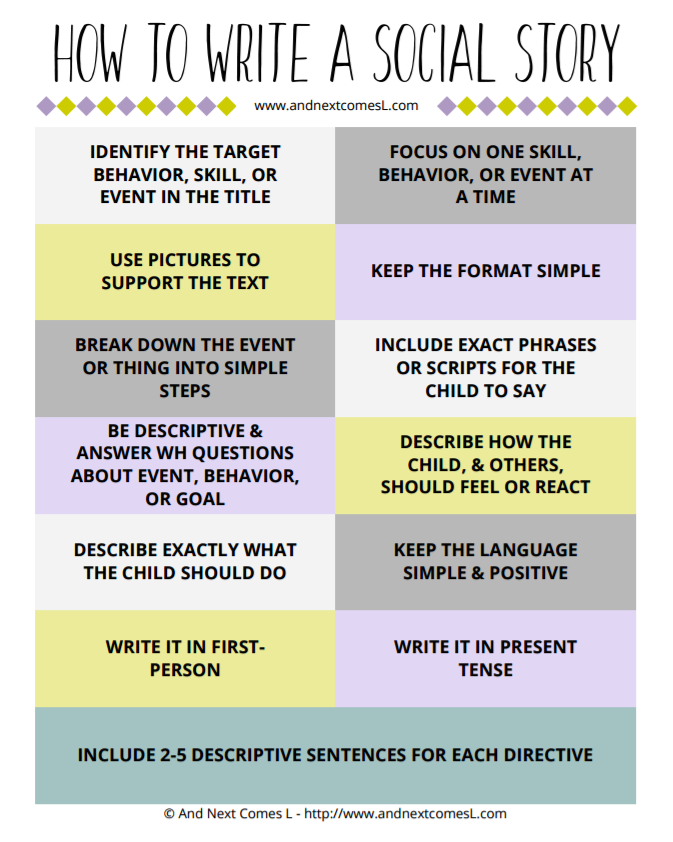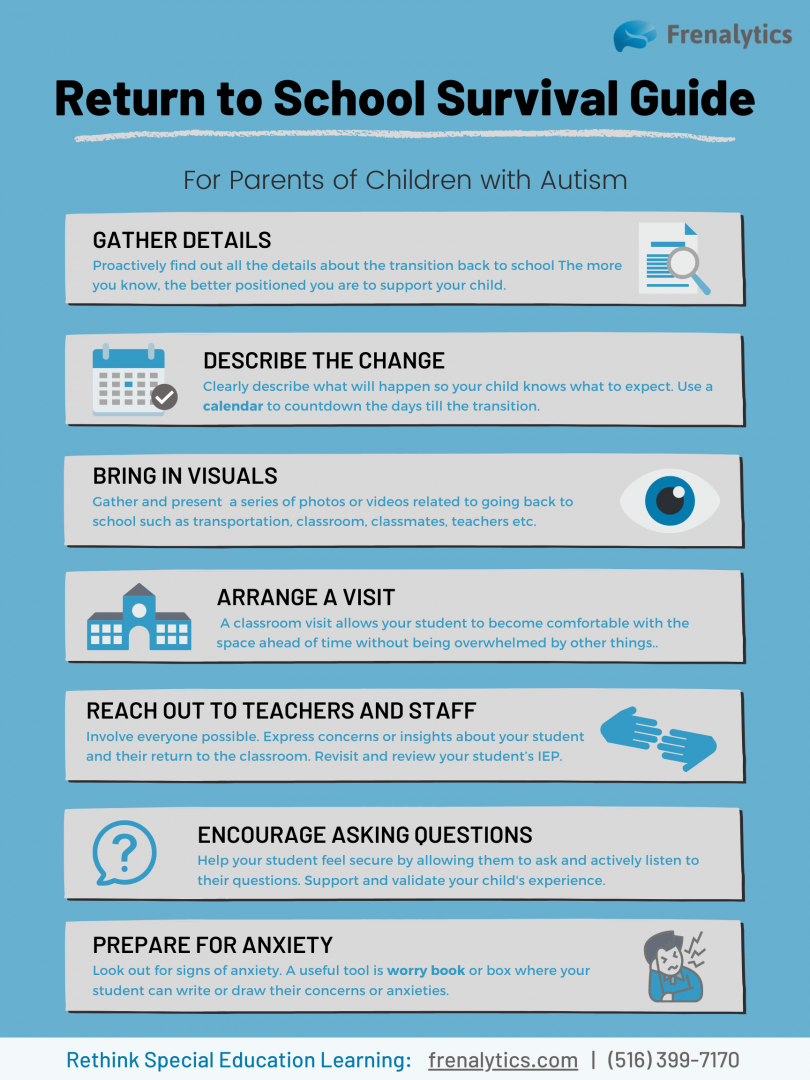by Charlotte Berman | April 21, 2021
Transitioning back to the classroom will certainly not be without challenges. The rapid shift to remote learning last year brought on extreme stress and transition anxiety for students, parents, and teachers. Now a year later we are facing another tense transition period, just reversed. Special education students, particularly students with Autism Spectrum Disorder (ASD), often find any kind of change difficult. Individuals with ASD thrive off of structured routines and have a hard time dealing with changes to their daily or weekly schedule. The National Autistic Society states that it may be difficult for individuals with Autism to change their approach to something once they have been taught the “right” way of doing things.
Individuals with ASD may have a variety of responses to a big change like the return to the classroom. Some responses could include exhibiting withdrawal, repetitive behaviors, tantrums, or even aggression. However, it’s important to remember that these behaviors are likely the result of extreme anxiety and difficulty communicating their emotions. Upcoming transitions to in-person learning call for thorough preparation and a readied response to best support your child with ASD.
Get excited about your child’s return to the classroom and feel ready by reading these tips to prepare for change:
Return to School Survival Guide For Parents of Children with Autism
1) Gather Details
Be proactive in finding out all the details about your school’s transition back to in-person learning. Ask your school the following questions:
- How will your child be leaving and arriving at the building?
- How many hours each week will your child be in the classroom?
- What are the state and school policies concerning COVID-19 health and safety? Is your child expected to follow COVID guidelines or will they receive any accommodations or exceptions?
- What is the arrangement of the classroom?
- Who will your child be interacting with throughout the day?
- What will their services look like?
- What supplies and technology will be incorporated into your child’s learning experience?
The more you know about your child’s transition the better positioned you are to support them.
2) Describe the Change
Describing the change to in-person learning clearly and early to your child is crucial. The more time a child has to understand and prepare, the better. Clearly describe what will happen so they know what to expect. Information about the return to in-person learning should likely be communicated with your family either over Zoom or an online learning platform (Canvas, Google Classroom, etc), but be sure to supplement these details with a personal conversation with your child.
When you learn the exact day or week that your child will begin in-person learning, immediately mark it on a calendar. Counting down the days to this event is another helpful strategy that will help your child prepare. Knowing when exactly the change is coming will help your child better anticipate in-person learning and will help to ease their change anxieties.
Another useful technique for introducing change is employing social stories. A social story is a tool to help individuals with ASD prepare for social interaction or events. Social stories model appropriate social interaction by describing details of a situation, explaining what typically happens in that setting, and then showcasing ideal responses and behaviors.

Source: And Next Comes L
For example, to model a return to school, you can make a social story about your child’s first day. Use both pictures and words to describe every detail of the anticipated day such as leaving the house, wearing a mask, respecting social distancing guidelines, arriving at school, meeting with teachers, interacting with other students, going through classes and activities, etc.
Make sure to emphasize the positive aspects of returning to in-person learning as much as possible: “You are going to learn so well in-person” or “You are going see your awesome teacher in real life”. Hearing that things will turn out well, reassures your child that this transition will be an okay experience.
3) Bring in Visuals
Visual imagery goes a long way. “A picture is worth a thousand words”. Pictures are worth possibly a million words to individuals with ASD; many individuals with Autism respond better to pictures than to words. Incorporate visual supports like photos or videos in your social stories or even more generally to explain the transition to in-person school. Gather and present a series of photos related to the transition including their transportation, classroom, classmates, teachers, etc.
4) Arrange a Visit
If possible, consider arranging a visit to your child’s school and classroom before the first day. It’s likely that they are returning to this environment after a long and disruptive year, or even harder they are coming into a brand new classroom or building. Any sort of practice or familiarity with the space will be huge for your child come the big day. A visit allows your child to start becoming comfortable with the space ahead of time without being overwhelmed by other things that would normally be there.
5) Reach Out to Teachers and Staff
Involve everyone possible in your child’s transition back to the classroom. It’s likely that your child’s teacher is already working intensely to prepare for everyone’s return to the classroom, but actively and frequently communicate with teachers and staff. Express any particular concerns or insights you have about your child and their return to the classroom. Revisit your child’s IEP and review with staff and teachers if you aren’t already.
6) Encourage Asking Questions and Prepare for Anxiety
Your child probably has a lot of questions and concerns about returning to school; however, they might not have the confidence to share them. Help your child feel secure by asking and actively listening to their questions.
Look out for signs of anxiety that your child may be having. Support and validate your child’s experience. The reopening of schools and the return to in-person learning is undoubtedly challenging for everyone involved. A useful tool could be creating a worry book or box where your student can write or draw their concerns or anxieties.
7) Brace for an Ongoing Process – How FrenalyticsEDU can help
It’s likely that your school district is phasing in the start of in-person learning. As state and health guidelines continue to shift, schools’ reopening plans will continue to change. Schools will not operate like they were before the pandemic for months to come. See a list of schools that have already announced reopening plans. Experiencing a hybrid learning schedule will be common and virtual learning techniques will endure despite the transition back to the physical classroom. This is where EdTech software like FrenalyticsEDU can come in to help your child and their teachers.
FrenalyticsEDU is a patented digital learning tool that provides highly personalized and interactive educational sessions for your child with Autism, Down syndrome and other intellectual disabilities. With classrooms this year looking a little different, from hybrid to totally virtual classroom, Frenalytics has responded by offering personalized digital lessons that are easy for teachers, accessible to parents, and most importantly fun for students.
Frenalytics requires no special downloads, allowing your child to use computers, tablets, or smartphones to participate in learning sessions anywhere, anytime. Frenalytics software can be integrated and easily translated from your in-person classroom to your at-home remote classroom.
We are the first comprehensive and interactive software platform to streamline life skills learning within special education, including enrolling students, managing transitions, and reporting outcomes. Our team at Frenalytics works extensively with educators to craft a one-of-a-kind software platform that improves the living experience for children with autism and special education needs while saving time and money for parents and schools.
Want to see how Frenalytics helps special needs students live more independent lives?
Click here to learn more, or give us a call at (516) 399-7170.
Charlotte Berman is a current senior at Boston College studying Psychology and Marketing. As a member of the Frenalytics marketing team, Charlotte has loved seeing how technology can help those with cognitive and learning challenges. Outside of work and school, catch Charlotte tap dancing or playing tennis. Contact Charlotte: charlotte@frenalytics.com


